CPC ad networks, also known as Cost-Per-Click networks, are platforms that connect advertisers with publishers. Advertisers pay for each click on their ads displayed on publisher websites or apps. Google Ads is one of the largest CPC networks, often regarded as the highest-earning platform in this category. However, Google AdSense has strict requirements, and not all publishers are accepted.
CPC ad networks provide advertisers the ability to place ads on relevant websites, helping them target specific audiences while only paying for results. This model is popular among both advertisers and publishers because of its performance-based nature, making it cost-effective for advertisers and profitable for publishers.
Ad Networks’ Role in Publishing
Ad networks play a crucial role in the relationship between publishers and advertisers. They serve as intermediaries that connect the two, simplifying the process for both parties. For publishers, ad networks handle the task of finding advertisers, selecting relevant ads, and managing ad placement and pricing. This saves time and effort, allowing publishers to focus on their content.
Publishers can benefit from ad networks by displaying CPC ads that are contextually relevant to their audience. This relevance increases the chances of users clicking on the ads, leading to higher revenue. By automating much of the advertising process, ad networks enable publishers to optimize their ad performance without managing individual advertisers.
Models of CPC Ad Networks
There are two primary models within CPC ad networks:
- Flat-rate CPC: In this model, the advertiser pays a fixed amount for each click. Publishers typically have a rate card that outlines the cost-per-click rates for various sections of their website or network. This model provides stability for publishers, ensuring a consistent revenue stream for each click, regardless of market fluctuations.
- Bid-based CPC: This model operates on a bidding system where advertisers bid on specific keywords or keyword groups to secure ad space above search results. The bid amount determines the placement and visibility of the ad. In bid-based CPC, an online auction takes place between the advertiser and the ad network or publisher. The higher the bid, the better the placement.
Both models offer advantages depending on the publisher’s goals. Flat-rate CPC is simpler to manage, while bid-based CPC allows advertisers to control ad placement more dynamically based on their target audience.
Why CPC Ads Are Effective?
CPC ads are advantageous because they provide a direct and measurable way for advertisers to gain traffic. Advertisers pay only when a user clicks on the ad, making it a performance-based model that helps control costs. This ensures that advertisers are only paying for actual user engagement.
For publishers, CPC ads offer a reliable source of income. The more clicks they generate, the higher their earnings. CPC ads are especially useful because 60% of users are often unaware they are viewing paid ads, leading to a seamless user experience. This increases the likelihood of engagement without interrupting the content experience.
Additionally, CPC-based advertising is easily measurable in terms of impressions, clicks, and conversions. Advertisers can analyze these metrics to refine their campaigns, making it a popular choice in digital marketing strategies. With clearly defined goals and measurable results, CPC ads provide value for both parties involved.
Best CPC Ad Networks in 2026:
Here is the list of best CPC Ad Networks that you can join in 2026.
- Push.House
- Google AdSense
- Facebook Ads
- Bing Ads
- LinkedIn Ads
- Instagram Ads
- Pinterest Ads
- Twitter Ads
- AdRecover
- AdRoll
- Reddit Ads
- RevContent
- Outbrain
- Taboola
- YouTube Ads
- MyLead
1. Push.House:
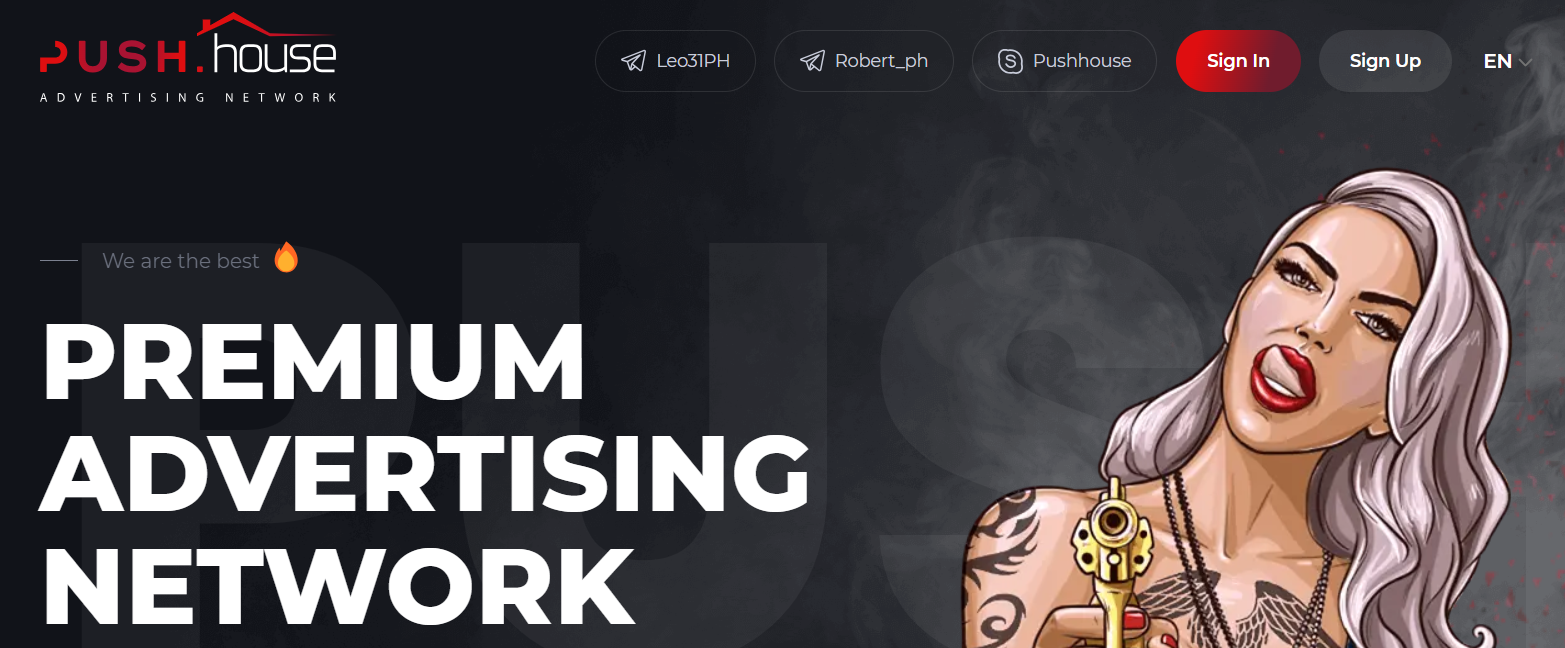
Push.House is a leading push notification ad network that helps publishers and advertisers reach audiences instantly through browser-based notifications. It’s designed for those looking to monetize traffic effectively while maintaining user engagement. The platform supports multiple ad formats and provides transparent analytics, making it easy to optimize campaigns and boost revenue through real-time bidding.
- Placements: Browser-based push notifications across desktop and mobile devices worldwide.
- Ad Formats: Push notifications, in-page push ads, and native ads.
- Pricing: Primarily CPC (Cost-Per-Click), with flexible bidding options for different GEOs and audience types.
Pros:
- High CTR (Click-Through Rate) due to direct user engagement.
- Works well with all traffic types, including mobile and desktop.
- Supports real-time campaign optimization with detailed analytics.
- Easy to integrate with most websites and ad trackers.
Cons:
- Requires user subscription to receive push notifications.
- Revenue can fluctuate depending on opt-in rates and GEO quality.
2. Google AdSense:
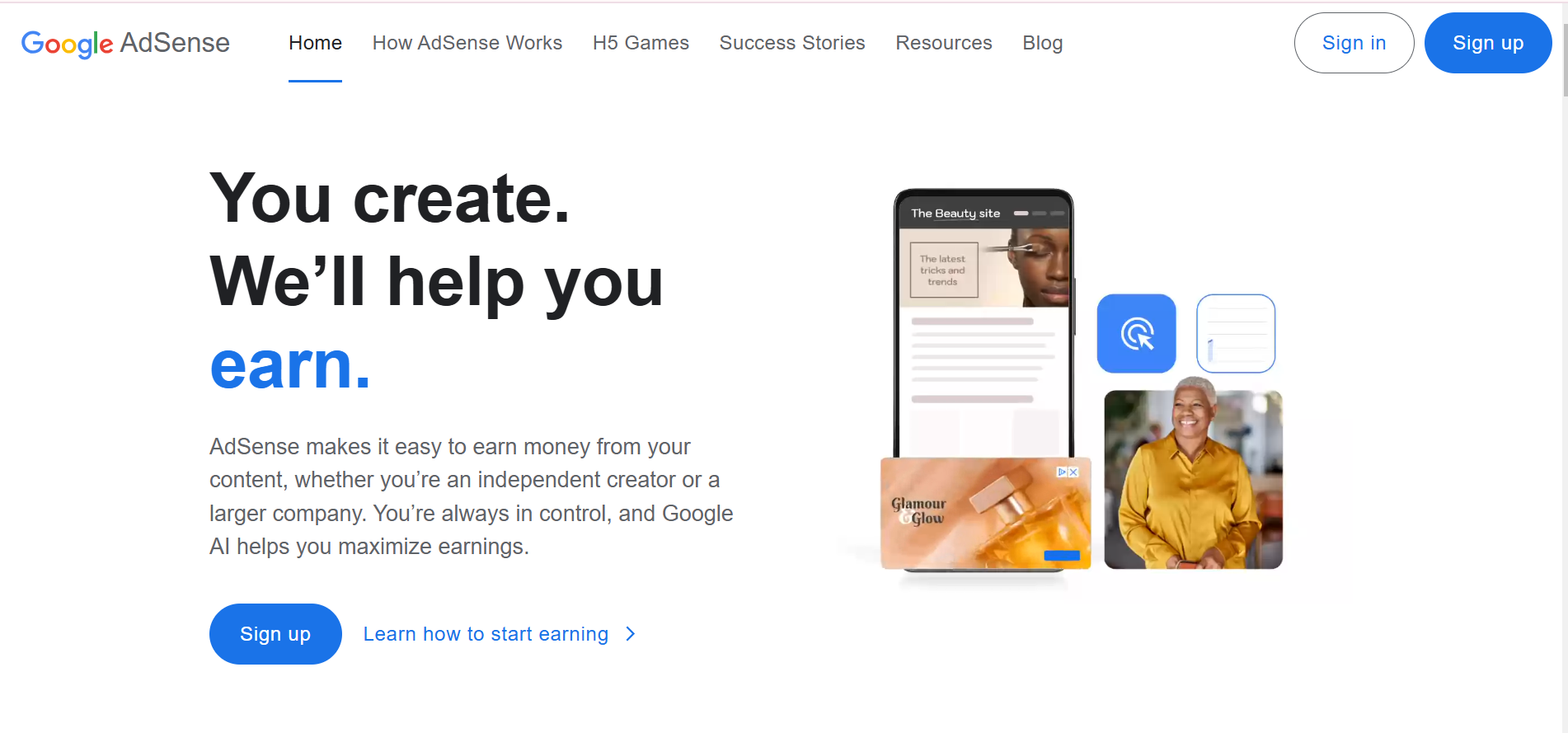
Google Ads is a platform that everyone has the know-how of. Google’s extensive ad network is appropriate for all kinds of campaigns, regardless of the industry you’re in or the size of your company.
One of the most well-known and established ad networks is Google AdSense. The advantage of adopting Google AdSense for publishers is that it is extremely optimizable and offers contextual, relevant ads. You may even ask Google to advise you on where to place your ads on your website. The most straightforward method for earning money utilizing pay-per-click advertisements is through Google AdSense.
- Placements: Results from Google’s search engines, GDN site placements, retail, mobile apps, and YouTube.
- Ad Formats: text, responsive pictures, and video
- Pricing: Cost-per-click (CPC) model is dependent on ad quality and competition. GDN accepts a cost-per-1,000-impressions model (CPM).
Pros:
- By far, the greatest global impact
- Various bidding techniques
- Massive toolkit for CPC ad campaign optimization
- The Display Network features an unrivaled range of websites.
Cons:
- The ad network with the highest CPC
- Click fraud has been widely publicized.
3. Facebook Ads:
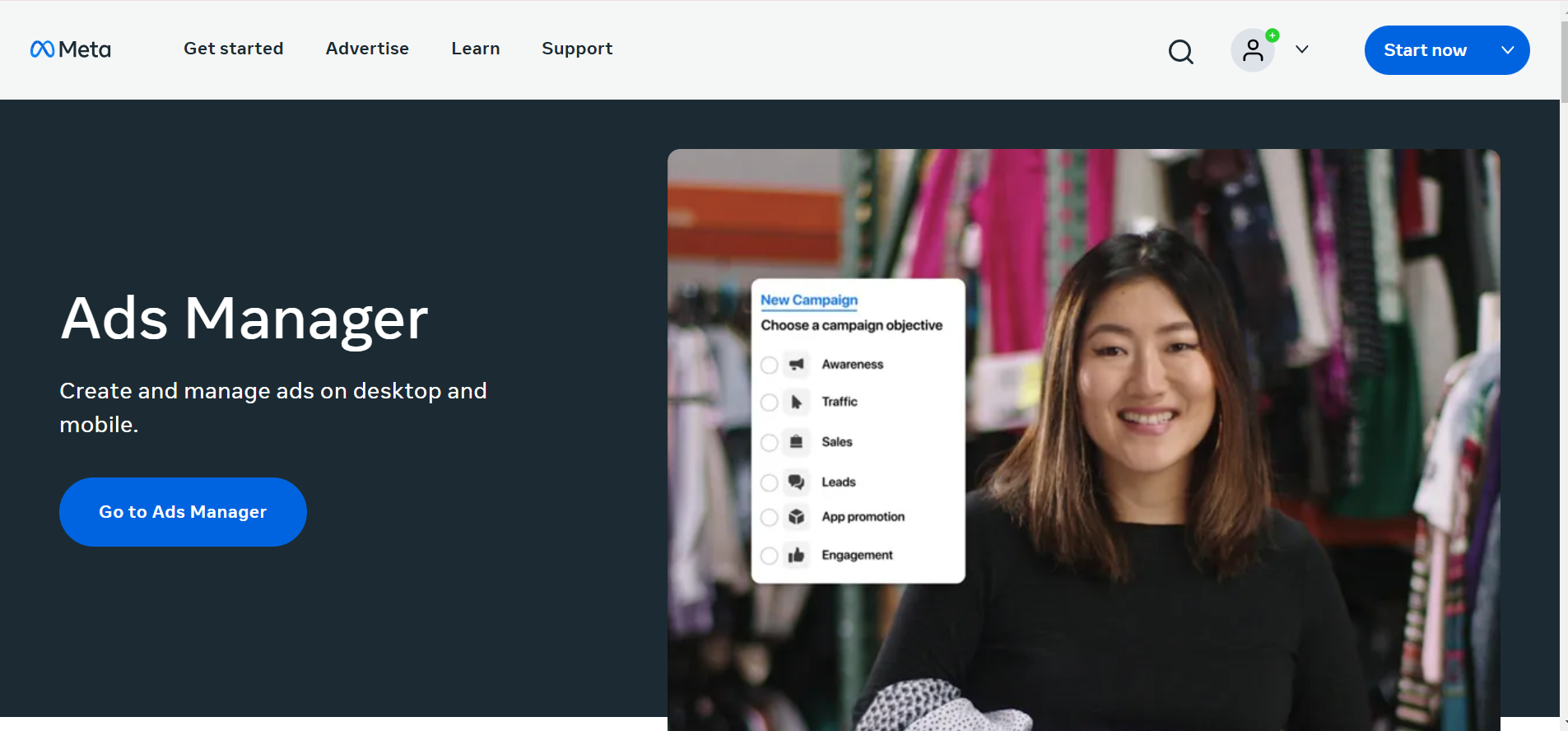
A fairly unique but nonetheless enticing ad network package is provided by Facebook Ads. Facebook ads, in contrast to Google and Microsoft ads, concentrate on demographic targeting. As a result, a person need not be actively looking in order for your advertisement to be activated. Instead, you can acquire two of the top social media streams to show your advertisements, such as Facebook and Instagram.
Additionally, ads may run on the Facebook Audience Network and on Facebook Messenger. This is mostly concerned with app-based advertising. So, you might be thinking of a decent alternative if your business is into apps or the kind of stuff that attracts app users.
However, the most potent feature is the choice to promote on Facebook or Instagram’s news feed.
- Placements: Messenger, Facebook, Instagram, and Audience Network.
- Ad Formats: Canvas, carousel, slideshow, video, single picture (mobile). Various video and display formats, including native, interstitial, rewarded, and in-stream video, are supported by Audience Network on mobile devices.
- Pricing: Based on a bid, anticipated action rates, and ad quality, the cost per the desired action.
Pros:
- Excellent for targeting a specific population
- Ads in native content can be quite successful.
- Several excellent choices exist for app developers.
- Affordable CPC ad network
Cons:
- It’s possible that ad viewers have no intention of buying.
- Facebook may be a contentious website, and as of this writing, some marketers are refusing to use it.
4. Microsoft Advertising (Bing Ads):
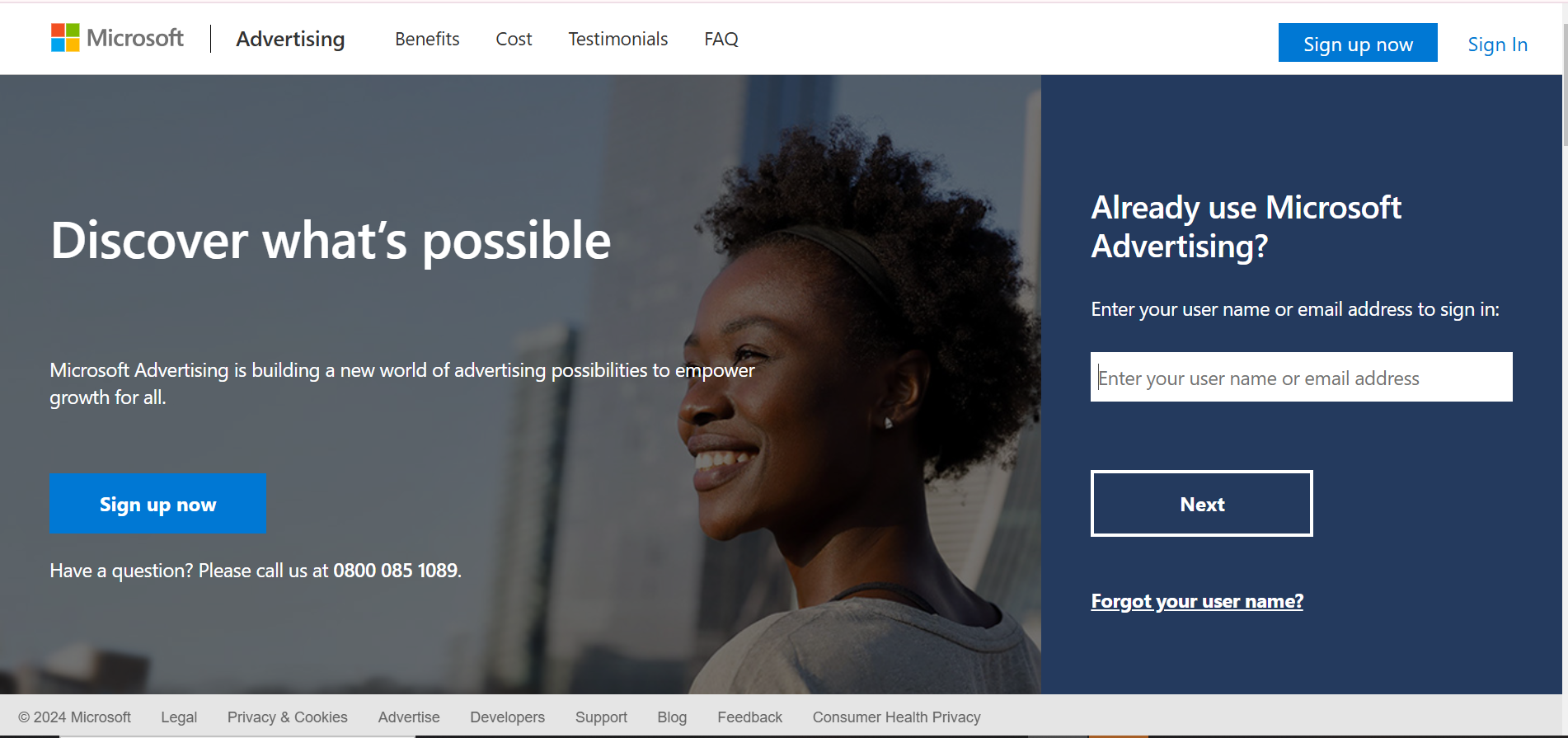
Utilizing the second-largest CPC network, Bing Ads, which is now referred to as Microsoft Advertising, has many advantages, according to a recent analysis of the service.
Microsoft Ads may be highly alluring if you’re looking for a Google Ads substitute that offers a low CPC in comparison to Google and still has a significant audience. Similar to Google, Microsoft Ads provides sponsored search engine results and a list of well-known websites where your banner, video, or content ads can be seen.
- Placements: Search engines, the Edge browser, and a few high-quality partner sites are all part of Microsoft’s Audience Network, which also includes native content placements on MSN, Outlook.com, and other websites.
- Ad Formats: Text that is responsive and optimized for native placements. LinkedIn offers shopping campaigns, dynamic search advertisements, and text ads.
- Pricing: Based on competitiveness and ad quality, the CPC model.
Pros:
- CPC for a CPC ad network that is reasonably affordable
- Market share for worldwide search is one-third.
- high-end population, particularly in the USA
- Less opposition to popular searches and keywords
Cons:
- fewer options than Google for displaying network results
- still attracts a lot of click fraud.
5. LinkedIn Ads:
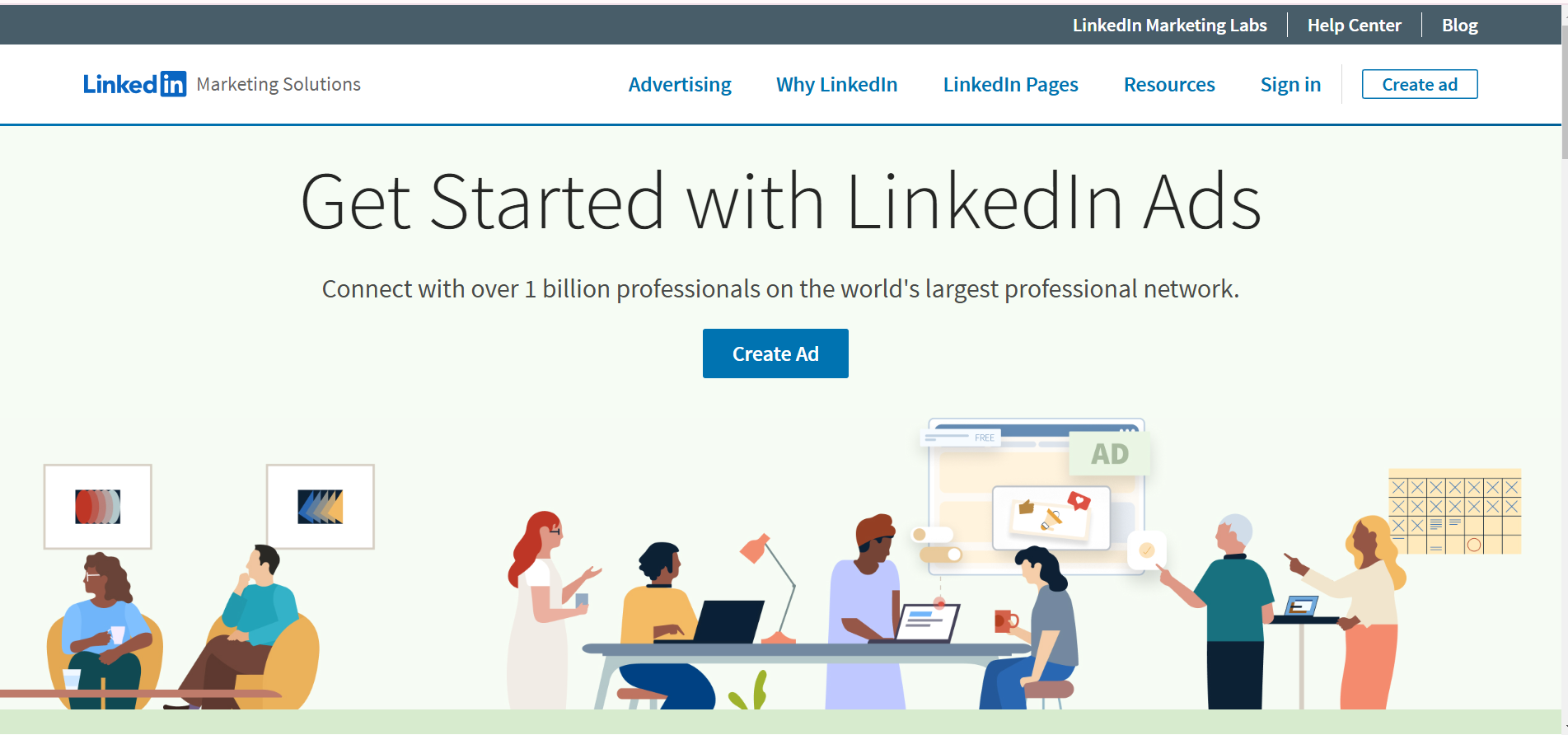
LinkedIn, also referred to as “Facebook for professionals,” has been rapidly gaining ground as a CPC platform. The rationale is that you may target a market that is business smart and well-educated, frequently with significant purchasing power and intent.
Similar to Facebook, you can target particular demographics despite the fact that they are professionals in this case, including marketing specialists, C-level executives, and business owners. If your business is a B2B service, you’ve undoubtedly previously thought about using LinkedIn Ads.
- Placements: There are tens of thousands of mobile websites, mobile apps, and ad exchanges on LinkedIn and its LinkedIn Audience Network.
- Ad Formats: Text/image ads on LinkedIn, native ads on sites and apps of the LinkedIn Audience Network.
- Pricing: Cost-per-send, CPM, and a CPC model based on competition and ad relevance (CPS)
Pros:
- Good audience reach among working professionals
- Native Advertising Choice
- An effective method for some direct marketing is InMail.
- Precise targeting of demographics
Cons:
- Not the cheapest CPC.
- Only suitable for B2B marketing
6. Instagram Ads:
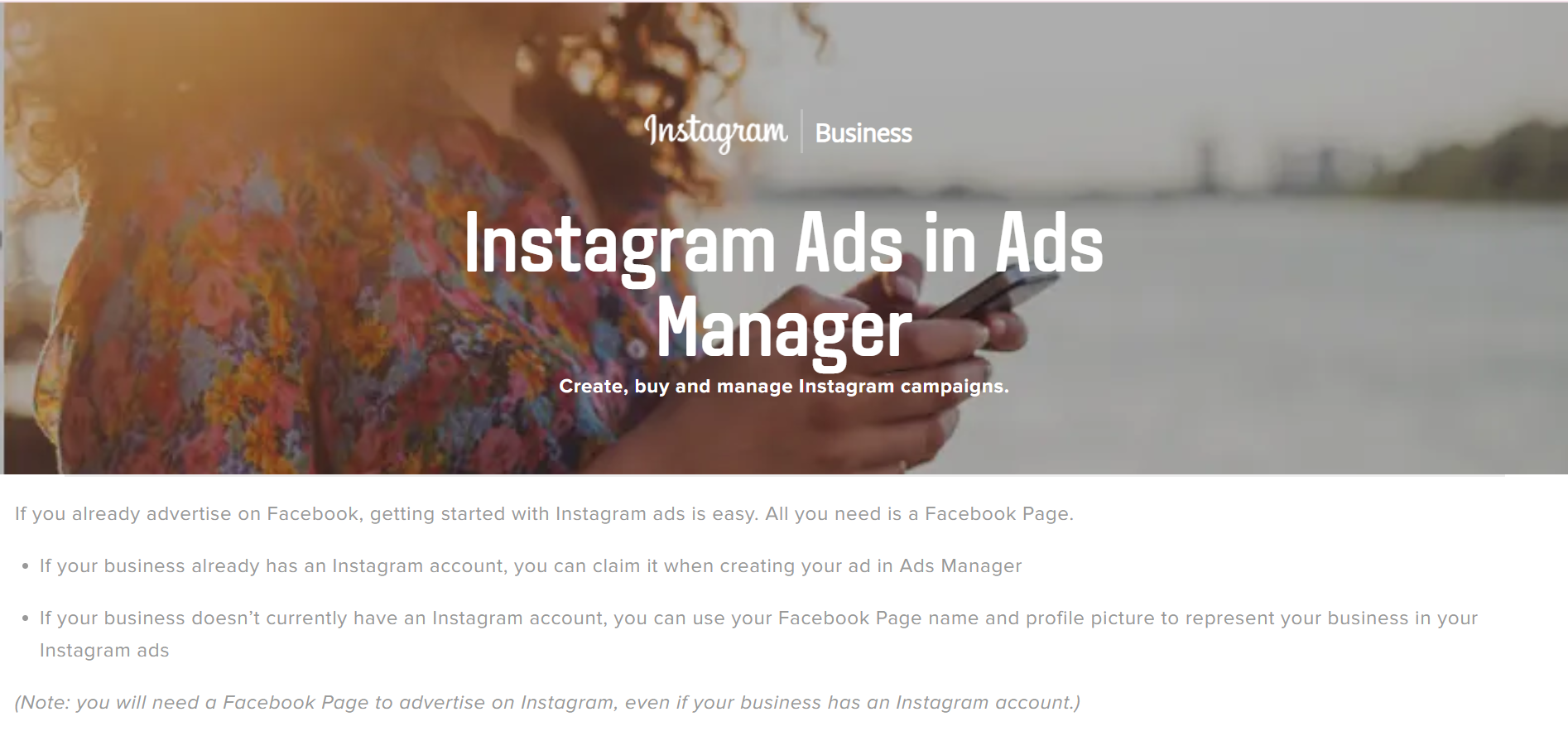
With over 1 billion active users, Instagram has a younger demographic than Facebook. As a Facebook company, the Facebook Ads platform is used for campaign design and administration. Although Facebook suggests utilizing Automatic Places, which targets all settings in a single campaign, the advertiser can easily change this to any placement they like.
- Placements: It is possible to mix Facebook placements with Instagram Newsfeeds and Stories.
- Ad Formats: Single image, video, carousel advertisement, and collection.
- Pricing: Based on the bid, anticipated action rates, and ad quality, the cost per desired action.
Pros:
- Highly visual and engaging ad formats for lifestyle and e-commerce brands.
- Advanced targeting through Meta Ads Manager.
- Supports both CPC and CPM campaigns.
- Strong performance among younger, mobile-first users.
Cons:
- Can be expensive in competitive niches.
- Requires high-quality creative assets for best performance.
7. Pinterest Ads:
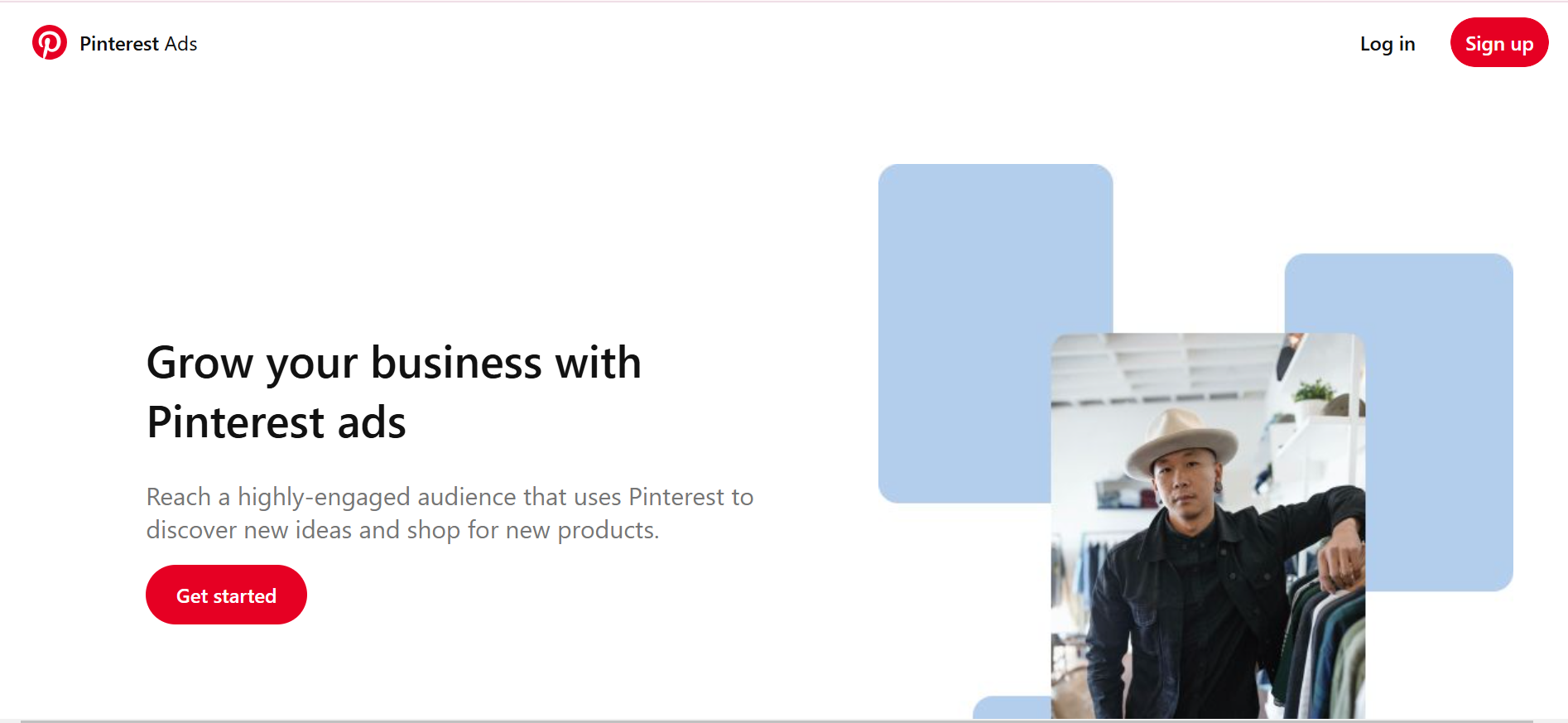
A large portion of the 200 million active monthly users of Pinterest are people who want to buy things. They use the site to investigate trends, ideas, and products.
At 7%, women make up the bulk of users, and 40% of them have family incomes of $100,000 or more.
- Placements: Placements include the Pinterest app and website.
- Ad Formats: One-tap promoted pins, cinematic pins, promoted video pins, and promoted app pins are all examples of promoted pins.
- Pricing: Installs of apps, CPC for promoted pins, and CPM for promoted video pins.
Pros:
- Highly engaged audience with strong buying intent.
- Perfect for e-commerce, lifestyle, and creative brands.
- Ads blend naturally into organic content.
- Long content lifespan — pins continue driving traffic over time.
Cons:
- Limited targeting compared to Facebook or Google.
- Works best for visually appealing, product-driven niches.
8. Twitter Ads:
With 330 million active users per month, Twitter provides a number of ways to connect with its audience. Twitter advertising, in contrast to that on many other platforms, is only found on Twitter and does not have any network partners.
Due to their ability to contain various combinations of text and other media that abide by general standards, promoted tweets are undoubtedly one of the most flexible ad forms.
- Placements: Twitter’s website and mobile app.
- Ad Formats: Promoted accounts, promoted trends, and promoted tweets such as text and/or photos, GIFS, and videos.
- Pricing: Promoted tweets and accounts are CPC, whereas a Twitter sales agent handles promoted trends.
Pros:
- One of the least expensive social media ad networks is Twitter.
- Effective racial/ethnic targeting
- Both B2B and B2C can benefit from it
- Marketing your hashtag can be a successful marketing tactic.
Cons:
- It might be difficult to cut through the chatter on Twitter.
- If you haven’t already, Twitter may not be sufficiently helpful to you.
9. AdRecover:
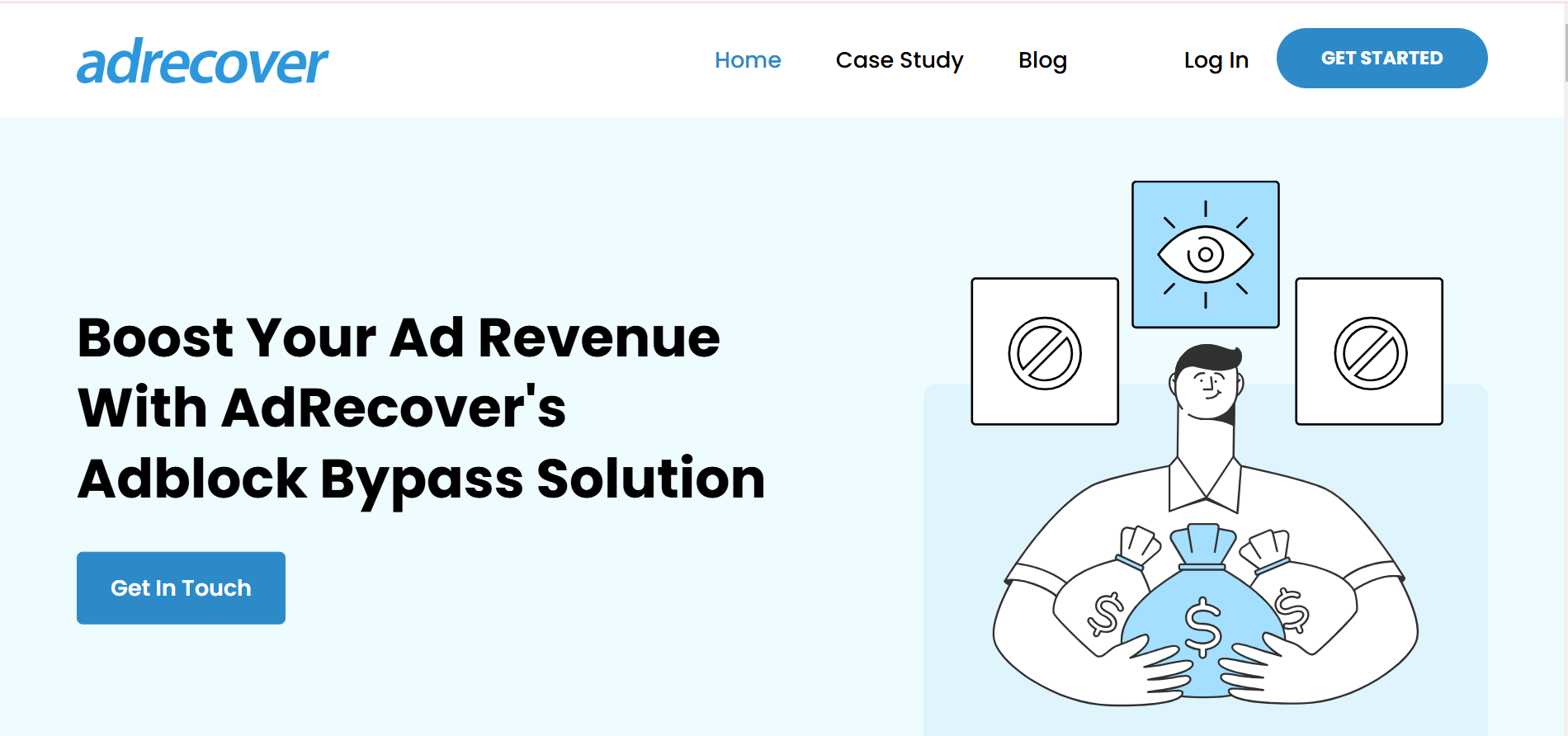
With the availability of Chrome extensions to stop adverts, the number of individuals using ad blockers has increased in recent years. But with complete permission allowed and non-intrusive adverts, this sophisticated CPC ad network may be able to avoid ad blockers.
According to data, millennials are the group most likely to use ad blockers; therefore, employing AdRecover may help you reach this valuable demographic. According to AdRecover, all advertisements are non-intrusive, and many of them appear “just above break” without causing the page to load more slowly.
- Placements: Displayed on websites that have integrated AdRecover’s anti-ad-block technology, ensuring visibility to users who use ad blockers.
- Ad Formats: Text and display ads optimized for speed, minimalism, and user experience.
- Pricing: Operates on a CPC (Cost-Per-Click) model, with rates depending on niche, traffic quality, and GEOs.
Pros:
- Get your ads in front of AdBlock users, who are typically millennials.
- Ads must be subtle.
- High CTR and conversion rates are indicated by their own data.
Cons:
- Unsuitable for CPC marketing campaigns with a limited budget
- Neither banner nor video adverts
10. AdRoll:
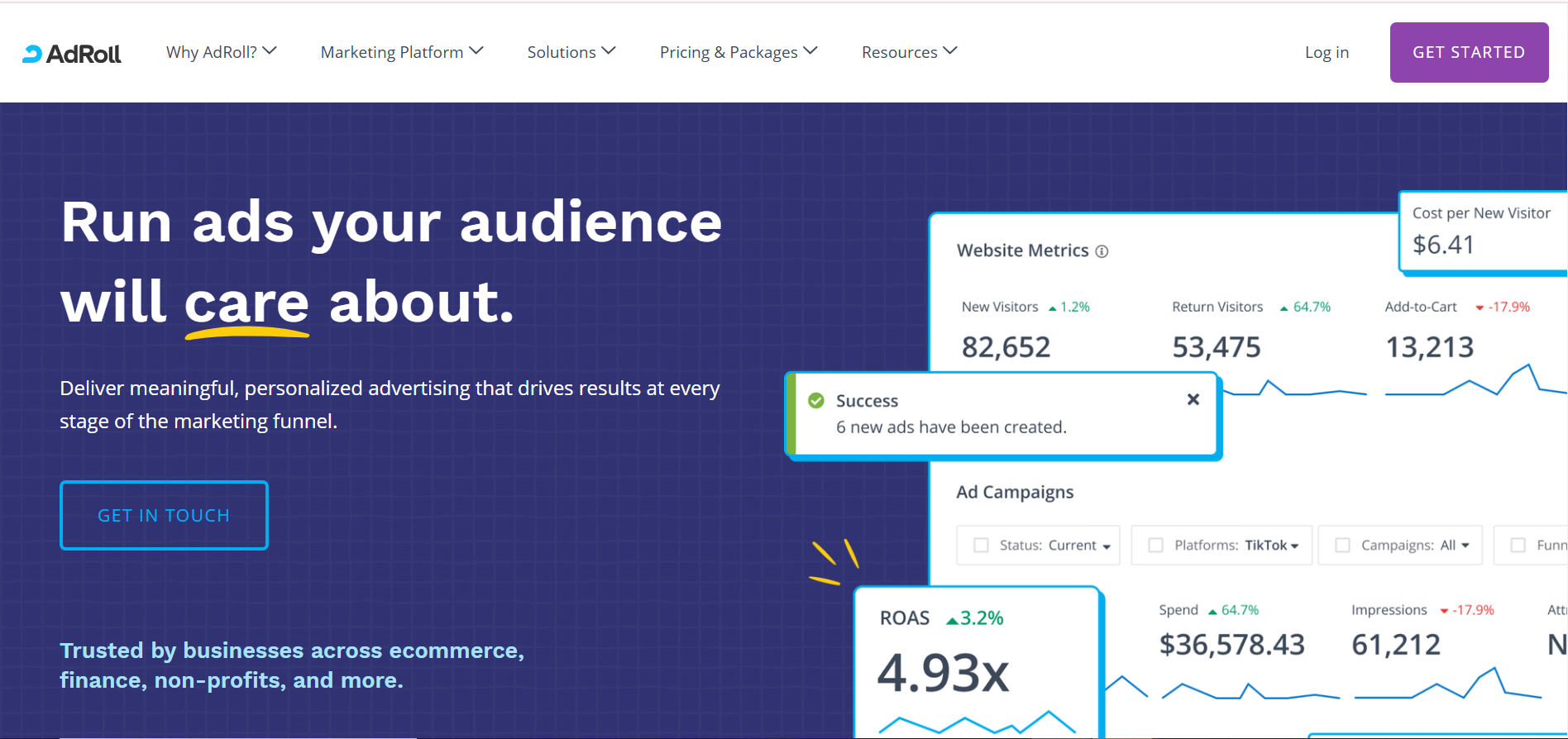
AdRoll, one of the largest retargeting ad networks, is an effective tool for encouraging repeat visits or turning potential site users into paying clients. AdRoll operates by utilizing AI to comprehend user behaviors. In order to increase interaction on social media, via email, or from your own e-commerce site, it organizes your advertising strategy throughout a variety of platforms.
- Placements: Web, social media platforms (Facebook, Instagram, TikTok, LinkedIn), and email retargeting.
- Ad Formats: Display ads, dynamic product ads, native ads, and social media retargeting ads.
- Pricing: Operates primarily on CPC (Cost-Per-Click) and CPM (Cost-Per-1,000 Impressions) models, depending on the campaign goals and ad type.
Pros:
- specialized retargeting platform with powerful AI
- combines website and social media retargeting for your personal site
- finds the most affordable retargeting ad deal.
Cons:
- Little influence over bidding methods because AI does everything
- The cost depends greatly on your advertising plan.
11. Reddit Ads:
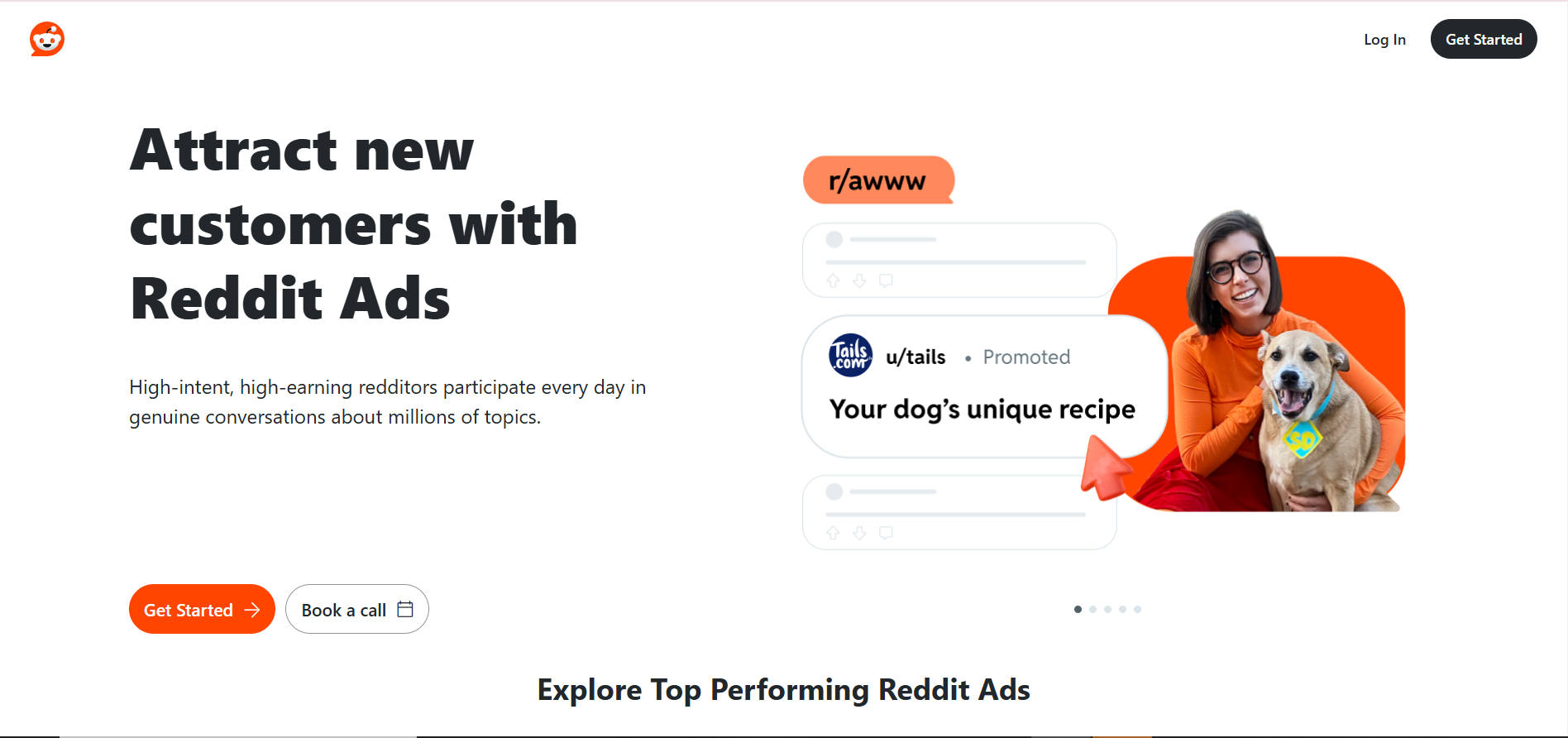
A different social media site promoting itself as a CPC ad network? Yes, Reddit is a valuable medium for specialized advertising, but you should also have it in your arsenal.
What precisely is Reddit? Since it’s the largest social network in the world, you should probably glance it over if you’re not already familiar.
- Placements: Reddit homepage, subreddit feeds, and within discussion threads.
- Ad Formats: Promoted posts, text ads, image ads, video ads, and carousel ads.
- Pricing: Primarily CPC (Cost-Per-Click) or CPM (Cost-Per-1,000 Impressions) based on your chosen campaign goal.
Pros:
- Reasonably affordable
- Good alternatives for targeting
- As an ad network, it is still mostly untapped.
Cons:
- Reddit advertising’s effectiveness has received conflicting reports.
- It might be more efficient to merely submit your link as a regular link in a relevant subreddit instead of purchasing it.
12. RevContent:
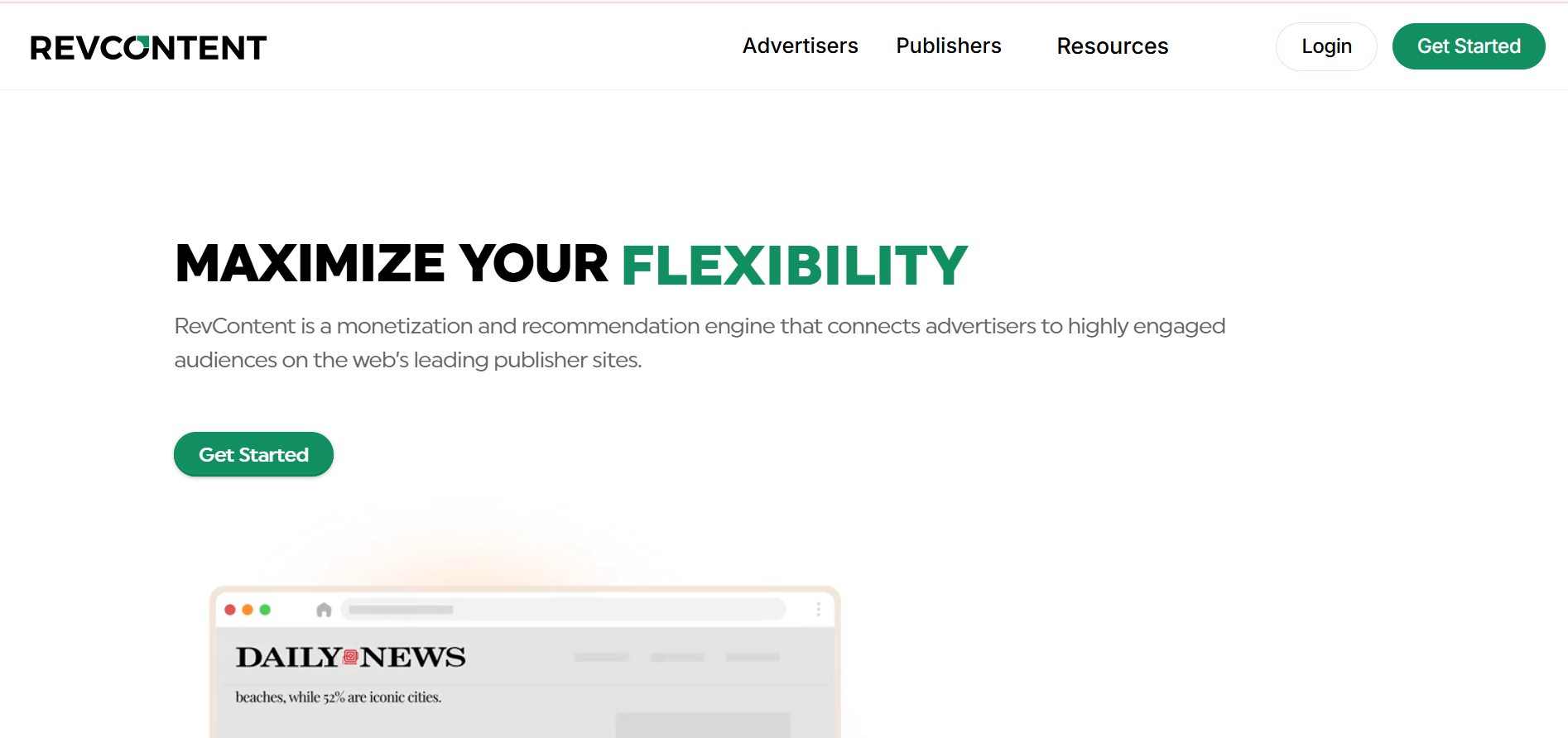
Similar to Taboola and Outbrain, this is a platform for advertising content recommendations. RevContent has a good reach with US audiences, even if it lacks a selection of high-end websites.
They are the most rapidly expanding native advertising network, according to their own statement. RevContent can be a good choice if you’re searching for a platform with room to expand and little competitiveness.
- Placements: Partner websites, content recommendation widgets, and mobile platforms.
- Ad Formats: Native content ads, display widgets, and video recommendations.
- Pricing: Operates on a CPC (Cost-Per-Click) model, with rates varying based on audience, niche, and campaign quality.
Pros:
- The native CPC ad network with the fastest growth rate worldwide…
- Little opposition
- There are countless partner websites where you can display your stuff.
Cons:
- On forums, RevContent appears to be viewed as a source of spam advertisements.
- Considering the rather tiny portfolio, the CPC is quite high.
13. Outbrain:
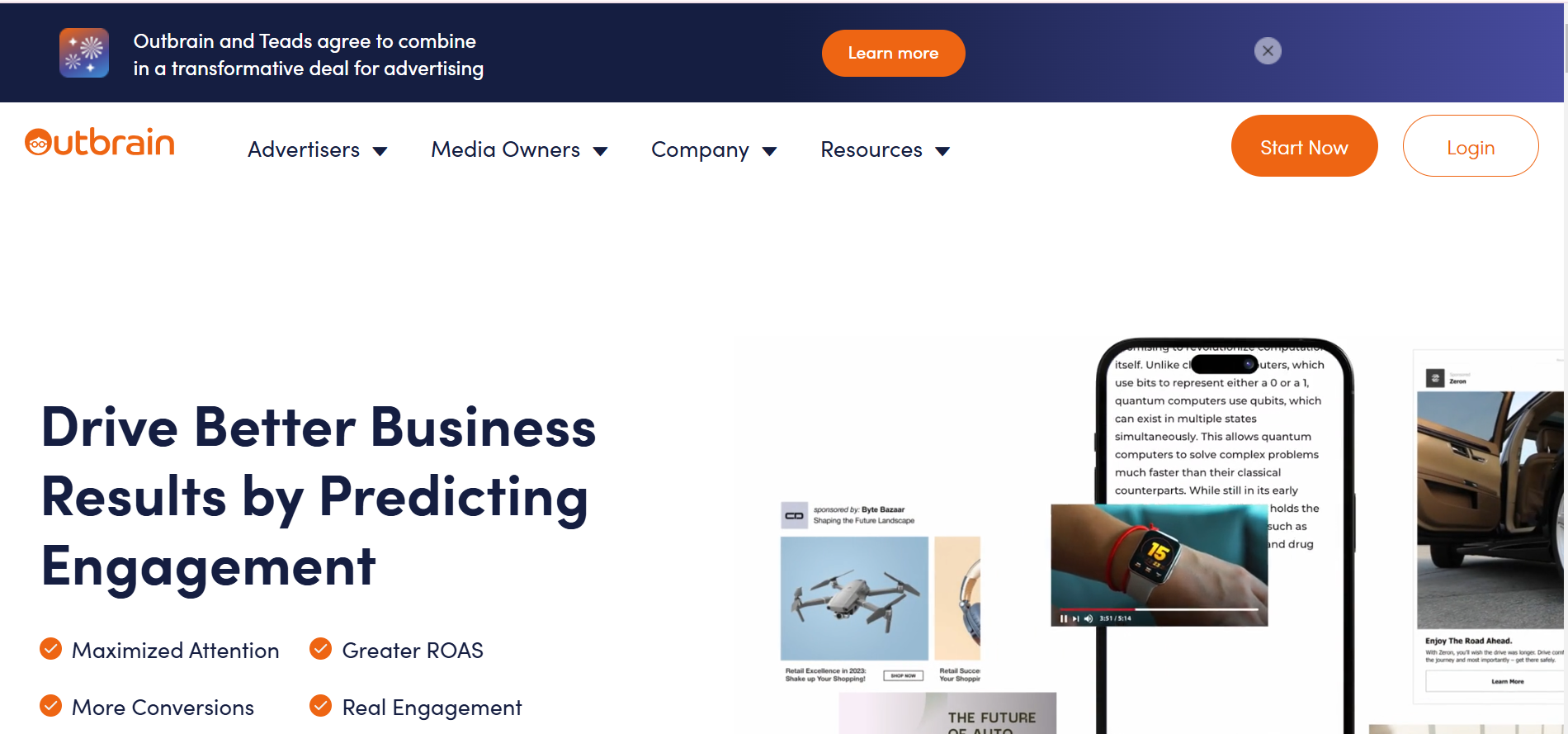
In reality, Taboola now owns Outbrain, so it’s essentially the same. Both have a strong emphasis on content marketing and a range of top-notch websites.
Regarding the publication of your material via its network of publishers, Outbrain continues to be no slouch. You’ll start to appear on websites like Conde Nast Traveler, Wired, The Guardian, CNN, and Cosmopolitan.According to sources, the average CPC on Outbrain is $0.10 as opposed to Taboola, which is closer to $0.45.
- Placements: Premium publisher sites including news, lifestyle, and entertainment portals.
- Ad Formats: Native content recommendations, carousel ads, and in-feed video ads.
- Pricing: Operates on a CPC (Cost-Per-Click) model, with an average CPC around $0.10, making it more affordable than Taboola (which averages around $0.45 per click).
Pros:
- Access to a global network of premium publishers.
- Excellent for content marketing and long-term brand storytelling.
- Affordable CPC rates compared to similar platforms.
Cons:
- Requires consistent optimization to maintain click quality.
- Limited control over exact placements.
14. Taboola:
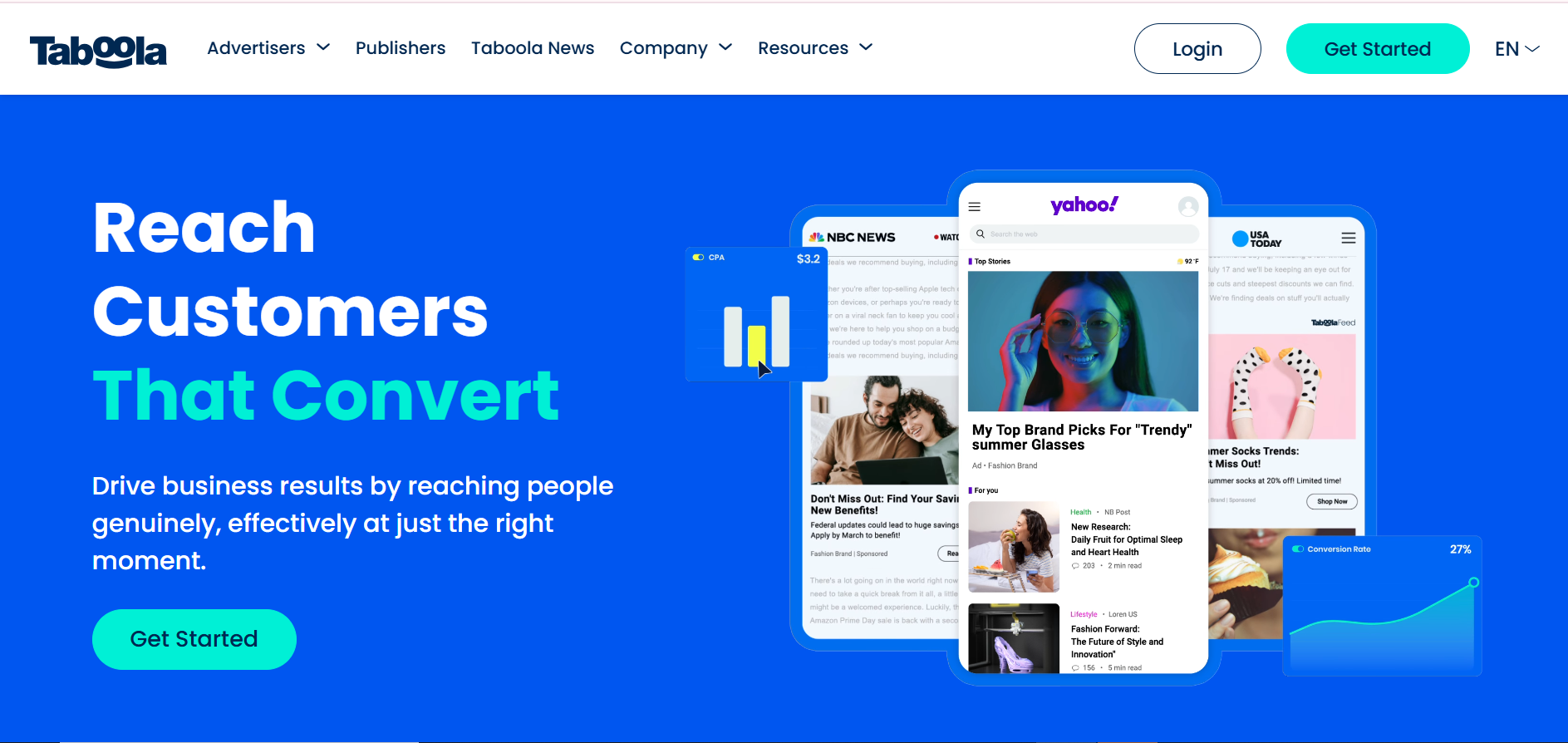
You’ve definitely seen Taboola on your favorite news website. It is the first of the specialized native advertising platforms on our list. Their area of expertise is sponsored content, which blends in nicely with any collection of news stories or other content that their partner websites may present.
Taboola is a cost-efficient and practical choice if you desire your business to be seen on websites like Business Insider, Forbes, or the New York Times. You must produce content that is compelling and intended to promote without being spammy, of course.
- Placements: Native ad placements across premium publishers, including news, lifestyle, and business websites.
- Ad Formats: Native in-feed ads, sponsored content, carousel ads, and video recommendations.
- Pricing: Works on a CPC (Cost-Per-Click) basis, with average costs ranging from $0.30 to $0.50 per click, depending on targeting and audience competitiveness.
Pros:
- Designed for content marketing
- CPC is low in comparison to other ad networks.
- High-quality websites that receive a lot of traffic
Cons:
- You’ll need to be on top of your content marketing game.
- Some people consider this content to be intrusive or spam.
15. YouTube Ads:
With over 2 billion logged-in users every month, YouTube provides a fantastic chance for advertisers to reach their target market efficiently.
The Google Ads platform is used for campaign planning and management, and YouTube Analytics in the YouTube account provides additional detailed data on the audience’s demographics and interaction.
- Placements: YouTube
- Ad Formats: Homepage commercials, bumper ads, video discovery ads, and in-stream ads that can be avoided.
- Price: CPV and CPM.
Pros:
- Massive global reach with precise demographic and interest targeting.
- Ideal for storytelling, product demos, and brand awareness.
- Advanced analytics for performance tracking and optimization.
Cons:
- Requires high-quality video creatives for best results.
- Competitive bidding can increase ad costs in popular niches.
16. MyLead:
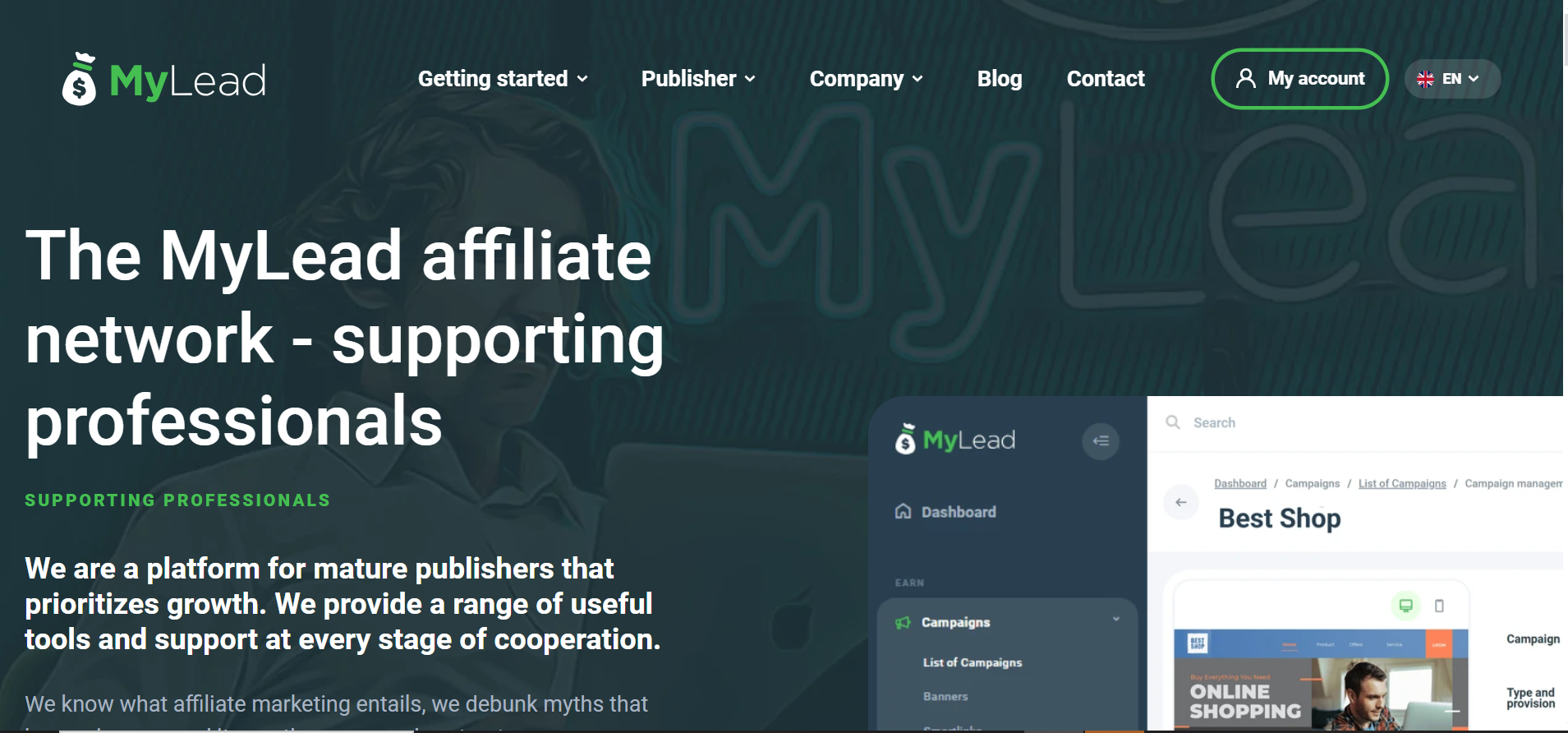
MyLead is a worldwide CPC Ad Network that has already paid more than $6 million to its clients and welcomes newcomers. It offers innovative tools and techniques for more advanced and beneficial affiliate marketing. You need not be worried about using these newer tools and techniques because MyLead also offers training programs for its new members.
It is one of the best and most famous affiliate marketing networks for advertisers and publishers. You can get a handsome commission on each sale you make possible the amount of commission depends upon the value of the product sold because of your contribution.
Pros:
- Offers a wide variety of affiliate programs and monetization options.
- Includes free training and support for beginners.
- Reliable payment system with multiple withdrawal methods.
Cons:
- Requires consistent traffic and engagement to earn high commissions.
- Some offers have geographical restrictions or limited availability.
How Do You Select What Fits You Best?
We understand your concern. How do I pick the best ad network for my website as a publisher? The first consideration is if you want your viewers to identify with the advertisement that is featured on your website. As we’ve seen, advertisers have a lot of options for ad networks, so picking the ideal one isn’t always easy. Google Ads, which offers the largest ad search engine and the most diverse display network, is by far the finest all-rounder.
Nevertheless, if you’re seeking a platform to target a certain demographic or a CPC ad channel with less competition, this list may have given you some options. For instance, LinkedIn Ads can be your perfect idea if you’re aiming to reach business professionals. Or perhaps one of our suggestions can help if you’re considering implementing native content CPC ads.
Final Verdict
Now that you’ve explored the top CPC ad networks, you have a clearer understanding of how publishers and advertisers benefit from this performance-driven model. CPC platforms remain one of the most reliable ways to earn passive income, offering flexibility, transparency, and measurable results.
Whether you’re a beginner blogger or a seasoned publisher, experimenting with multiple CPC networks can help you identify which platform delivers the highest ROI for your niche. Focus on optimizing ad placements, improving click quality, and staying updated with the latest ad trends to maximize your earnings.
In the ever-evolving world of digital advertising, choosing the right CPC ad network can make all the difference in transforming your website traffic into consistent revenue.
Frequently Asked Questions (FAQs)
What is a CPC Ad Network?
A CPC (Cost-Per-Click) ad network is a platform that connects advertisers with publishers. Advertisers pay each time a user clicks their ad, while publishers earn revenue based on the number of valid clicks generated through their website or app.
How do CPC ad networks pay publishers?
CPC networks pay publishers for every legitimate click on displayed ads. Payment rates vary depending on ad quality, audience location, niche, and advertiser competition. Payments are typically made via PayPal, wire transfer, or other online payment methods.
Which CPC ad network pays the highest?
Networks like Google AdSense, Media.net, and AdRoll are known for offering competitive CPC rates. However, actual earnings depend on your niche, traffic source, and the relevance of your audience to advertiser demand.
Can small websites use CPC ad networks?
Yes, many CPC ad networks welcome small or new publishers. Networks like MyLead and AdRecover are particularly beginner-friendly and provide tools to help new publishers optimize their campaigns.
What’s the difference between CPC and CPM ads?
In CPC (Cost-Per-Click), publishers earn money when users click on ads. In CPM (Cost-Per-Mille), they earn for every 1,000 ad impressions regardless of clicks. CPC is performance-based, while CPM is impression-based.
